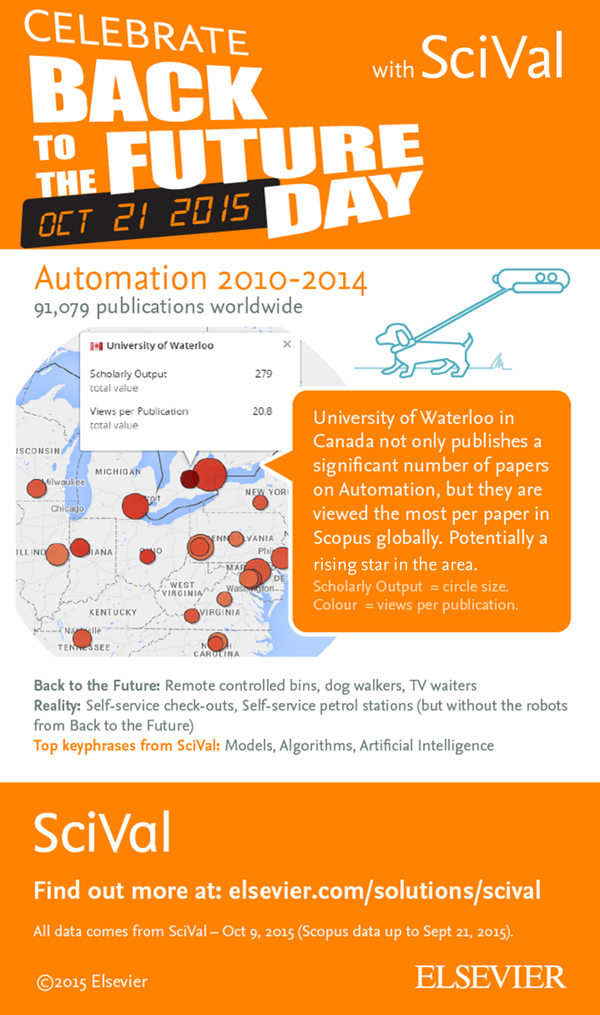Great Scott! Celebrate Back to the Future Day with SciVal and Scopus
October 21, 2015 – the furthest date in the future that the Back to the Future trilogy was set in is now upon us. It’s the date that Marty McFly, Jennifer and Doc travel to in the DeLorean and where we catch a glimpse of the future brought to us by director Robert Zemeckis.
While in the future, they experience some technological marvels – from self-tying shoelaces, to 3D shark holograms, and that famous hoverboard.
To mark the occasion, we’ve used SciVal to pull data together to show just how close Marty’s future has come to being our present.
Using the SciVal Trends module we looked at 5 specific areas of science – automation, biometrics, wearables, aging and hover (think remote controlled dog walkers, fingerprint scanning doorknobs, power-laces, rejuvenation clinics and hoverboards) – to see who’s doing what.
The Trends module uses citation and usage data from Scopus to build on the platform's ability to examine user-created research areas. By enabling deeper analysis of these 5 research areas, we can then discover the top-performing countries, institutions, authors and journals and the types of futuristic technology they’re working on.
The resulting infographic uses that information to demonstrate exactly which technologies from Marty’s future have arrived on time and which ones we’re waiting for.
All data comes from SciVal – Oct 9, 2015 (Scopus data up to Sept 21, 2015).
View the full infographic: elsevier.com/solutions/scival/back-to-the-future.


